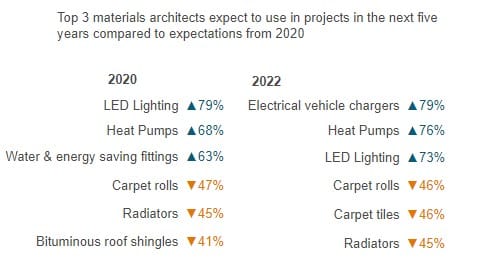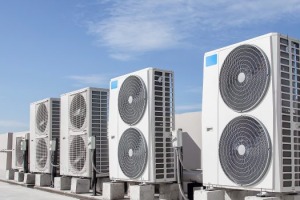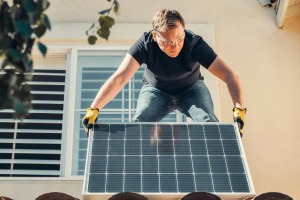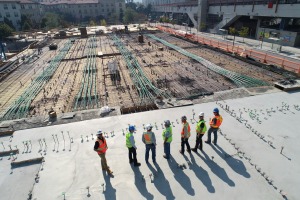


News I published 12 October 2022
Sustainable construction trend: architects continue to use fewer but more sustainable materials
Major trends in the construction and installation sector, as well as in society at large, ultimately affect the choices for materials and products used to construct the buildings around us. Because of their involvement in early stages of the construction process, architects have a high prediction value for many trends in the construction and installation sector, including trends and developments in materials used for building construction in all its facets.
That is why every other year, we dedicate one quarterly report of USP Marketing Consultancy’s European Architectural Barometer to material usage in building construction. For that report, we measure architects’ expectations of materials specified for building construction in the coming five years to construct a clear picture of the developments in materials used. Based on our interviews with architects from eight European countries in the second quarter of 2022, we can conclude that architects generally expect to specify and use fewer materials in the coming years.

Architects expect to use fewer materials
Across all countries, architects expect to use fewer materials for certain purposes or elements of a building. That is, they expect to use a smaller variety of types of construction materials.Those expectations started to appear in our measurement in 2020. In the 2022 measurements, we see that for the coming years, architects generally continue to expect using a smaller variety of materials.
This is the case for many materials in the ten product groups or building parts we interviewed architects about. Looking at building façades, for instance, architects expect to specify less concrete, plaster, architectural glass, metal and fewer bricks and external drywall systems. The only product type they expect to specify more is façade panels. A similar expected reduction of the majority of specified materials can be seen in both pitched and flat roof materials, flooring materials, metals in general, and quite a few materials used for the building envelope.

Exceptions show the quest for sustainability
Given that architects generally expect to specify fewer materials, it is more interesting to look at the exceptions to that statement. Doing so, it becomes clear that the common denominator for most of the materials that architects actually expect to specify more in the years to come is sustainability. Since buildings and building construction use up many resources and are major contributors to annual emissions of greenhouse gasses and pollution, it stands to reason that efforts are taken to make this sector more sustainable.
That sustainability trend is reflected by the few product or building part categories in which a majority of materials are actually expected to be specified more. In the category of insulation, for instance, architects expect to specify all types of insulation material more, except for polystyrene foams. As for installations and climate control, architects also expect to specify all sorts of materials and systems more, except for gas boilers and radiators.
The sustainability trend is not just reflected by better insulation, more heat pumps and fewer gas boilers, however. Looking at other categories, we see that architects expect to opt more often for renewable materials like timber, and fewer plastics and other oil-based materials. These are but few examples of the long list of materials we asked architects from eight European countries about. For a full overview of expected developments in materials used for building construction, we refer you to the Q2 2022 report of USP Marketing Consultancy’s European Architectural Barometer.

Read more about the subject


18 July 2024 I Dirk Hoogenboom
Willingness to invest of European consumers in sustainability improvements of their houses lower in 2024 than in 2023


02 July 2024 I Dirk Hoogenboom
BIM adoption among European HVAC installers remains low


06 June 2024 I Maja Markovic
Sustainability in the electrical installation sector; slow but steady growth


06 June 2024 I Dirk Hoogenboom
Trends in construction material usage

Fresh Insights Await
Our latest reports
Delve into the newest findings across various market segments, crafted for a cutting-edge overview. Explore our latest reports, brimming with up-to-date data, trend analyses, and in-depth examinations, all tailored to provide you with a comprehensive understanding of the current market dynamics.
Construction
Home Improvement
Installation
Construction
Trends in material usage Q1 2024
2024 102 pages
Explore the evolving trends in material usage among European architects in Q1 2024. Delve into the factors driving material preferences and the impact on construction aesthetics and sustainability.
1,850 Euro
Construction
Media orientation H2 2021
2024 161 pages
Explore the media engagement patterns of contractors to optimize your marketing strategies. Dive into a pool of insights that unveils how contractors interact with different media channels.
6,300 Euro
Construction
European Green Deal Q4 2021
2024 88 pages
Explore the impact and reception of the European Green Deal among architects. Understand how the initiative is influencing architectural practices and sustainability measures.
1,850 Euro
Construction
BIM Q4 2023
2024 246 pages
Key insights regarding the BIM usage and behaviour of European architects, and our latest future building volumes prognoses
1,850 Euro
Construction
Purchase Channels H2 2023
2024 123
Explore the buying and ordering behaviour among contractors in H1 2023. Uncover the key channels used, share-of-wallet and much more.
6,300 Euro
Construction
Behavioural segmentation and media usage report 2023
2023 75 pages
This report provides a comprehensive overview of purchase behaviour, products, and media usage, specifically focusing on European handymen. It delves into how handymen use media, and for what purposes, and examines their habits and preferences in terms of purchasing behaviour.
8,400 Euro
Home Improvement
DIY versus DIFM Q4 2021
2024 113 pages
This report is a must-have if you’re in the home improvement industry. It provides a wealth of information on the behaviour of DIY and DIFM consumers, their motivations, and the factors that influence their purchasing decisions.
3,150 Euro
Home Improvement
DIY or DIFM Q4 2023
2024 70
Explore the prevailing trends between DIY and DIFM in Q4 2023. Understand consumer preferences and the factors influencing their choice between DIY and DIFM.
3,150 Euro
Home Improvement
Branding Q3 2023
2023 93 pages
This report offers an extensive overview of the home improvement industry, with a focus on branding and the most popular brands within different categories. Within this report, you will gain insights into how customers perceive home improvement brands and what motivates them to buy certain products.
3,150 Euro
Home Improvement
Purchase channels Q2 2023
2023 114 pages
The European Home Improvement Monitor offers valuable insights on purchase channels in the European home improvement industry, examining the evolving preferences and behaviors of consumers across traditional retail and emerging online platforms.
3,150 Euros
Home Improvement
Purchase Channels Q2 2022
2022 124 pages
Uncover the prevalent purchase channels in the home improvement sector during Q2 2022. Delve into consumer preferences and the factors influencing their purchasing decisions.
3,150 Euro
Home Improvement
Do-it-yourself or do-it-for-me Q4 2022
2022 93 pages
Explore the prevailing trends between DIY and DIFM in Q4 2022. Understand consumer preferences and the factors influencing their choice between DIY and DIFM.
3,150 Euro
Installation
Smart & Connected Products Q2 2024
2024 120 pages
This report provides a comprehensive view of the attitudes of installers toward smart building solutions, specifically among electrical installers and their clients. In the report, you will find insights into the installers' experiences with installing smart products and the willingness of end users to invest in such solutions, as well as their motivations and pain points.
3,150 Euro
Installation
Sustainability Q1 2024
2024 81 pages
Delve into sustainability trends in the home improvement sector in Q1 2024. Discover consumer preferences and the shift towards eco-friendly home improvement solutions.
3,150 Euro
Installation
BIM Q1 2024
2024 84 pages
The European Mechanical Installation Monitor report provides a detailed analysis of the plumbing and HVAC industry. This report specifically focuses on BIM adaptation in the industry.
2,650 Euro
Installation
Sustainability Q1 2024
2024 99 pages
The European Electrical Installation Monitor report provides a detailed analysis of the sustainable solutions in the installation industry. This report specifically focuses on sustainability aspects in the industry.
3,150 Euro
Installation
Challenges toward sustainable future Q4 2021
2024 111 pages
2,650 Euro
Installation
Purchase channels Q4 2021
2024 106 pages
Delve into the training needs within the electrical installation sector. Understand the areas requiring skill development to meet the evolving demands of the industry.
3,150 Euro








